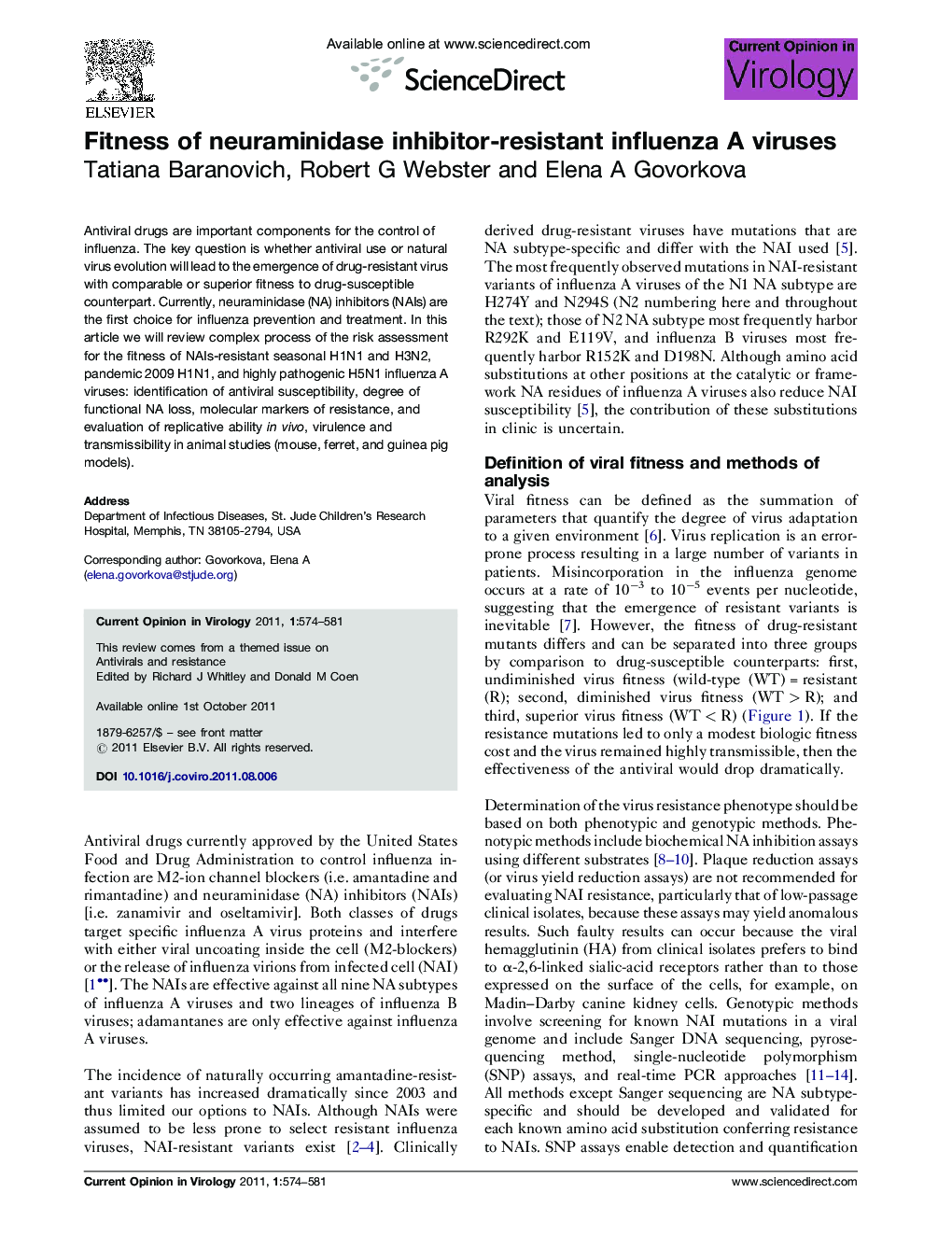| Article ID | Journal | Published Year | Pages | File Type |
|---|---|---|---|---|
| 2473412 | Current Opinion in Virology | 2011 | 8 Pages |
Antiviral drugs are important components for the control of influenza. The key question is whether antiviral use or natural virus evolution will lead to the emergence of drug-resistant virus with comparable or superior fitness to drug-susceptible counterpart. Currently, neuraminidase (NA) inhibitors (NAIs) are the first choice for influenza prevention and treatment. In this article we will review complex process of the risk assessment for the fitness of NAIs-resistant seasonal H1N1 and H3N2, pandemic 2009 H1N1, and highly pathogenic H5N1 influenza A viruses: identification of antiviral susceptibility, degree of functional NA loss, molecular markers of resistance, and evaluation of replicative ability in vivo, virulence and transmissibility in animal studies (mouse, ferret, and guinea pig models).
► Neuraminidase inhibitors are important class of antiviral drugs for the control of influenza. ► The development of drug resistance is a major obstacle to antiviral therapy. ► In this review we focused on the complex process of fitness evaluation for drug-resistant influenza A viruses. ► The risk assessments for the emergence of virulent and transmissible drug-resistant influenza viruses are also discussed.
